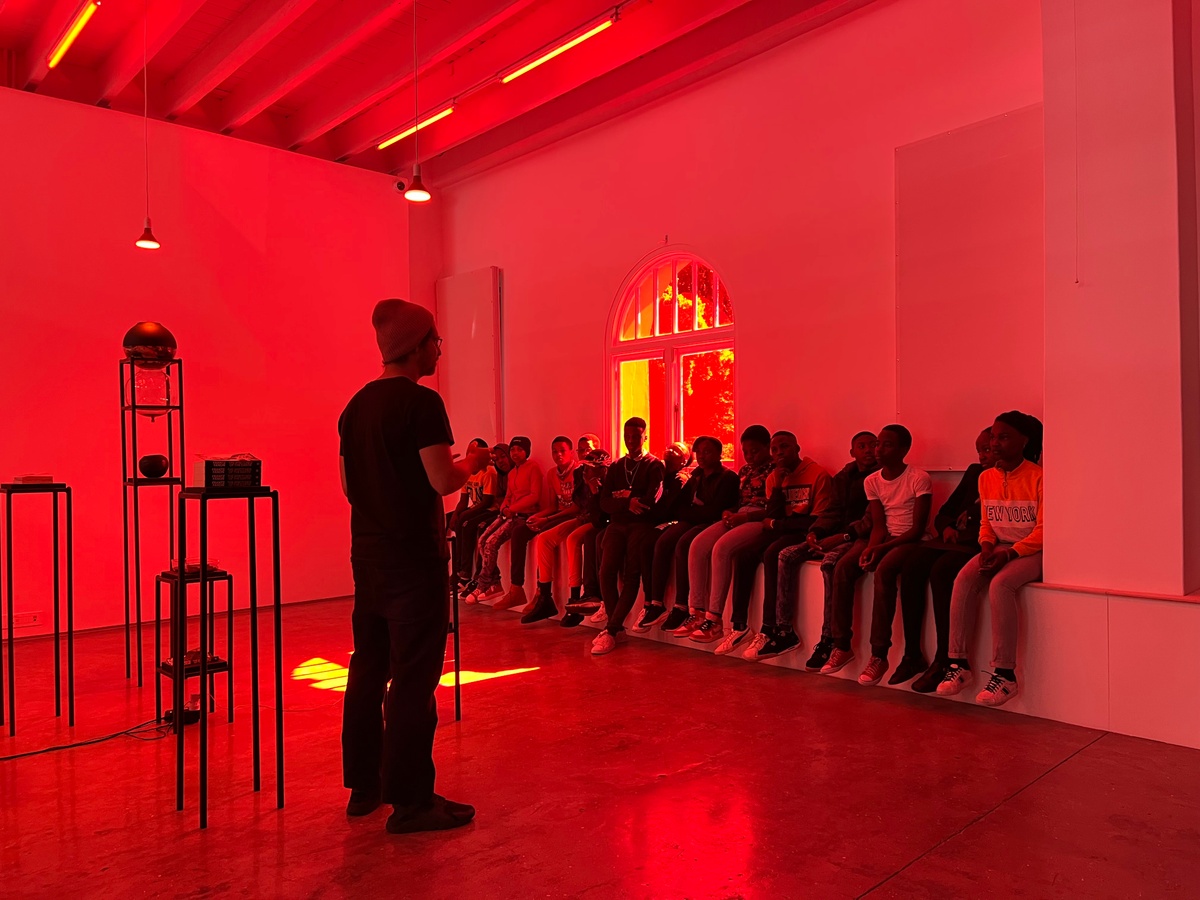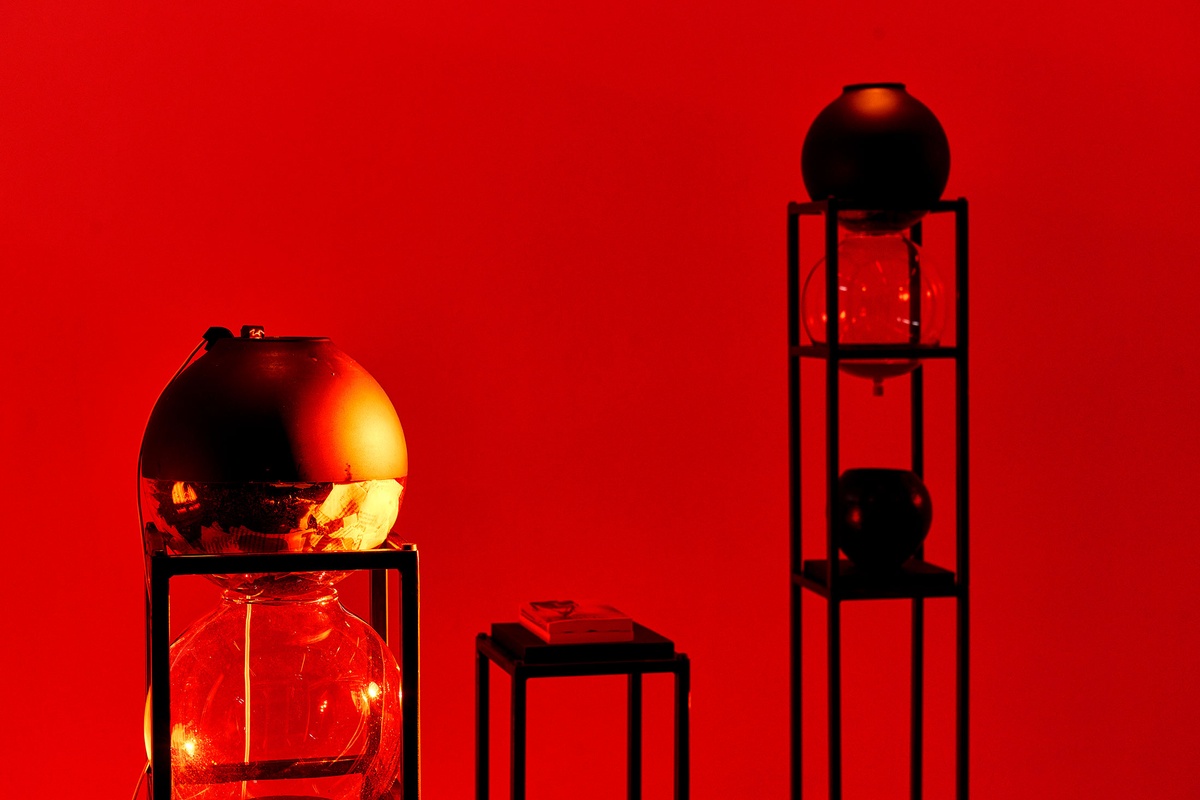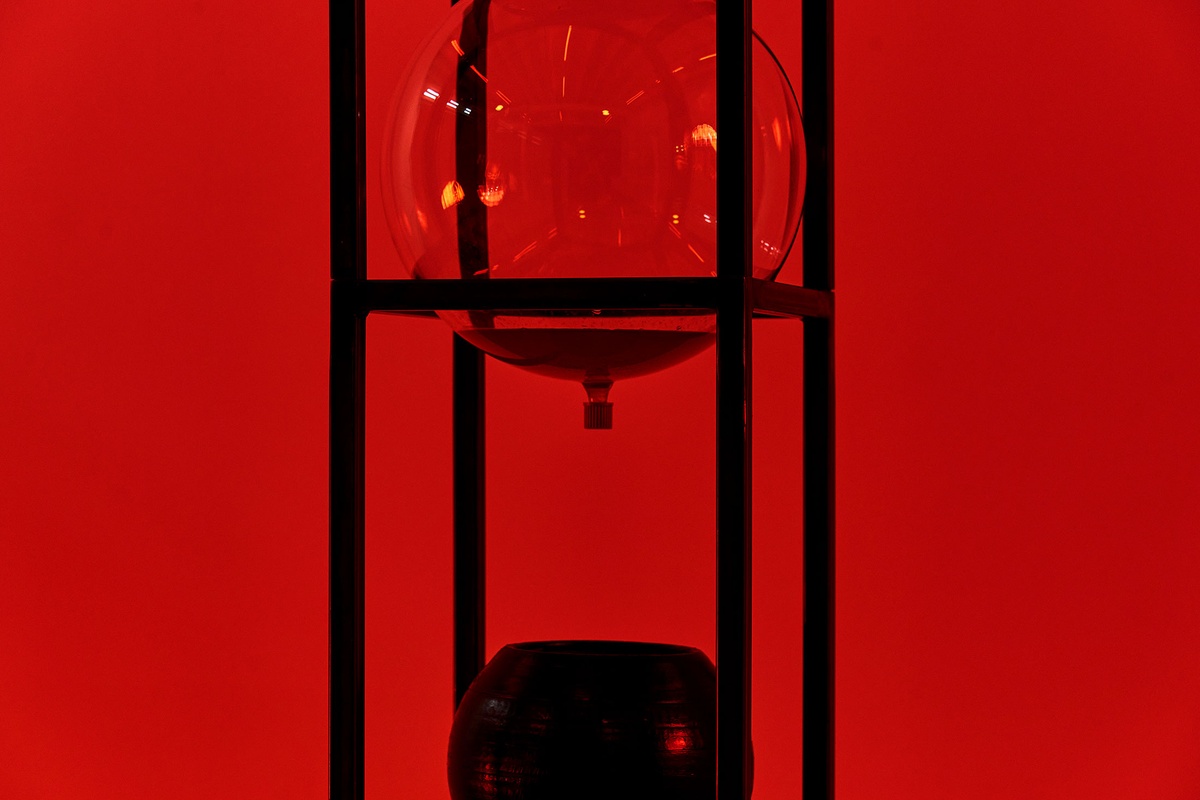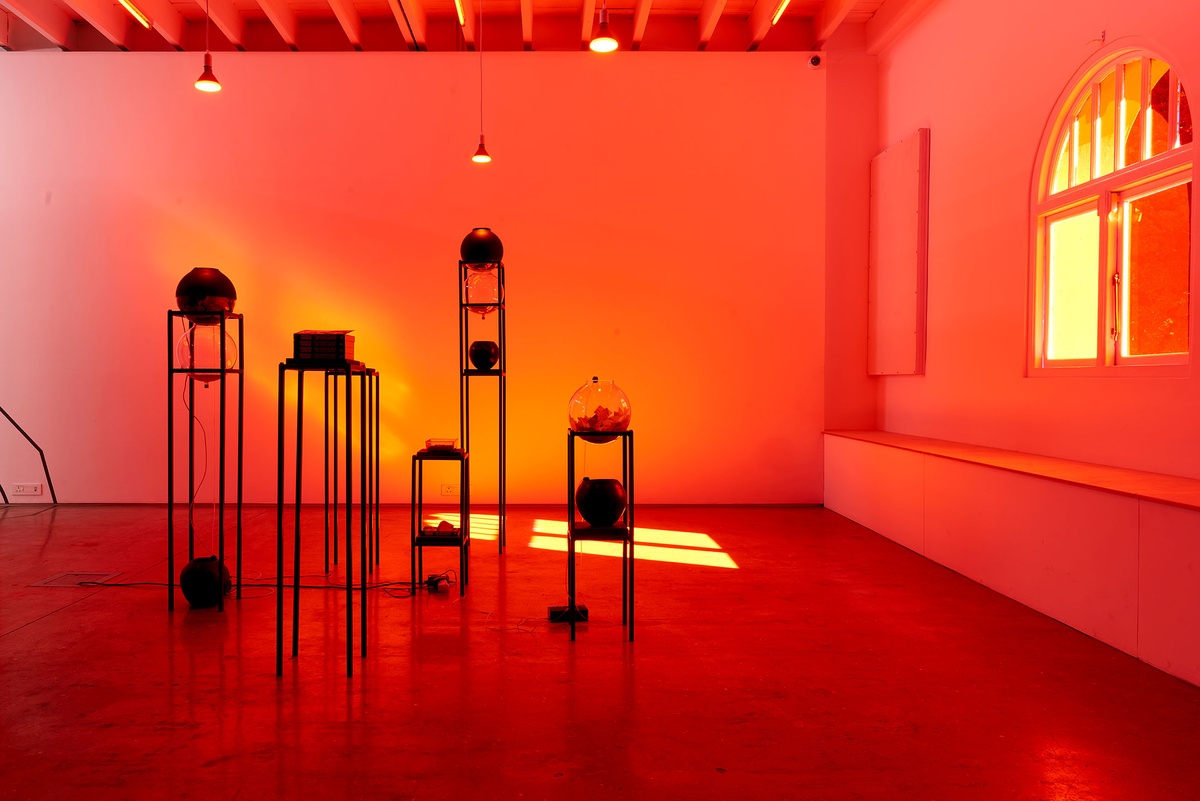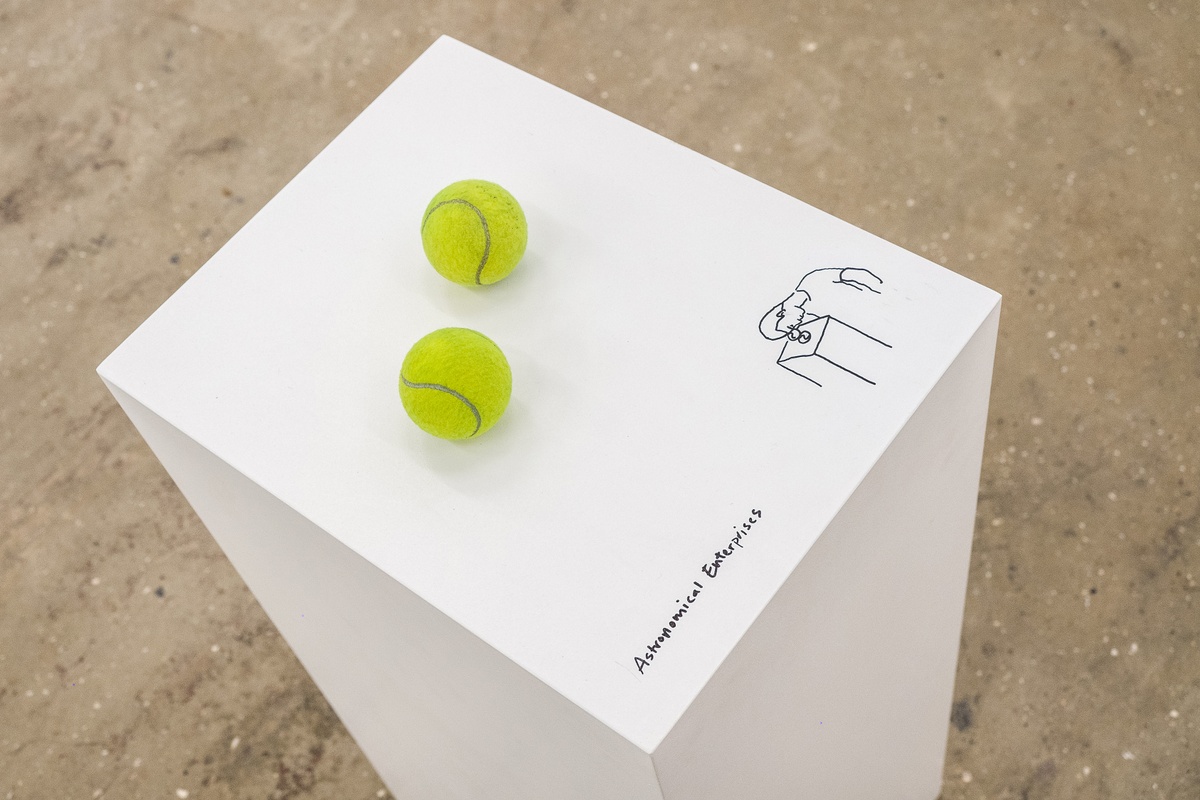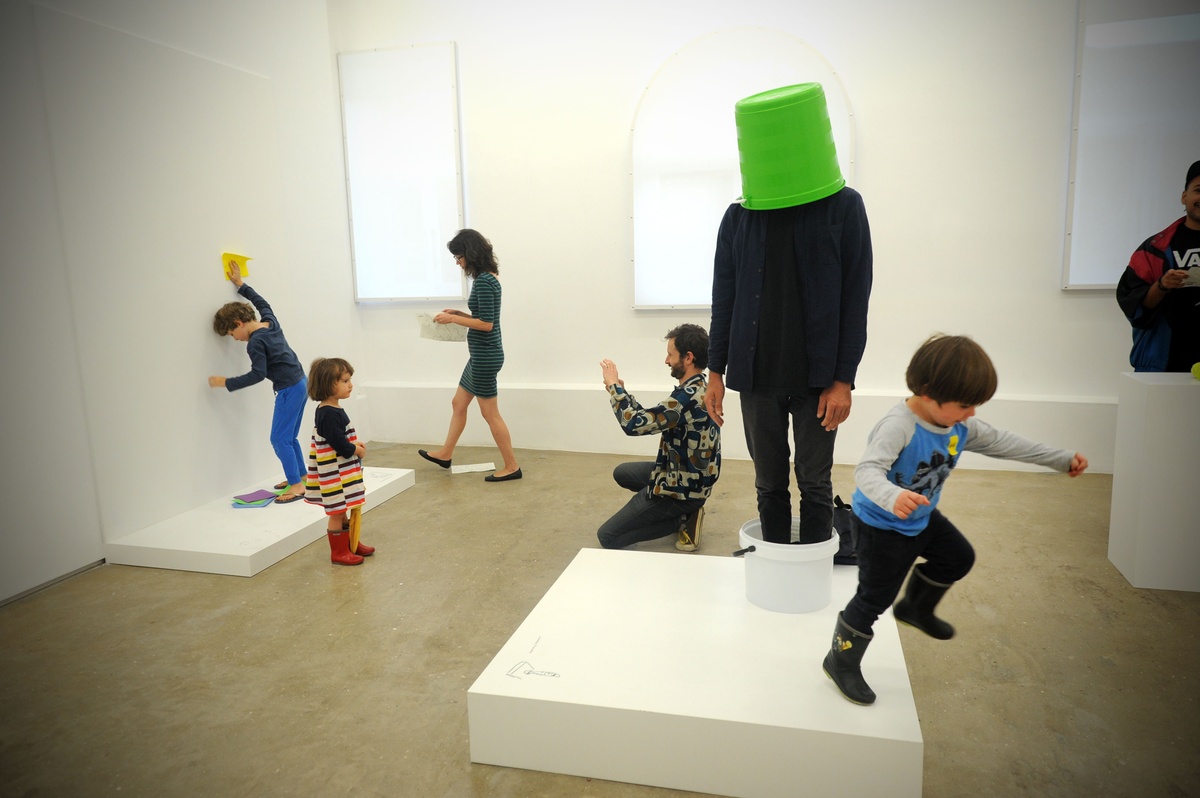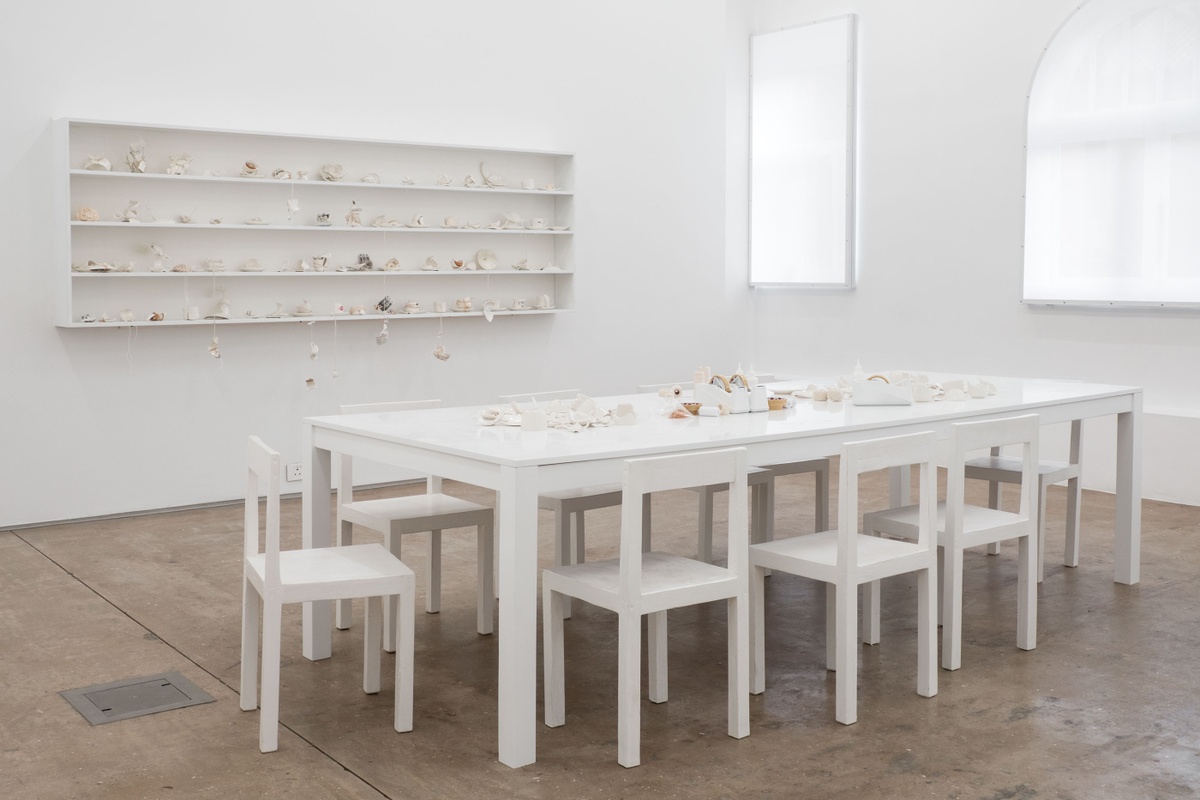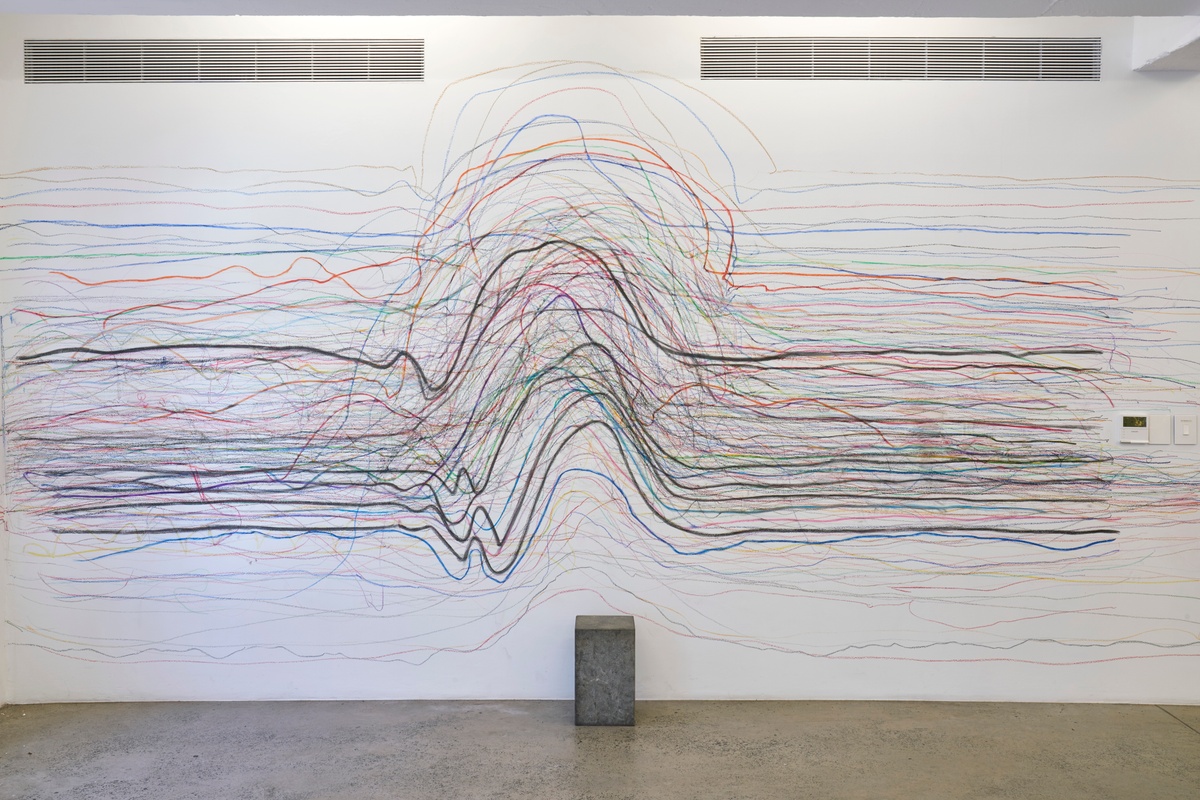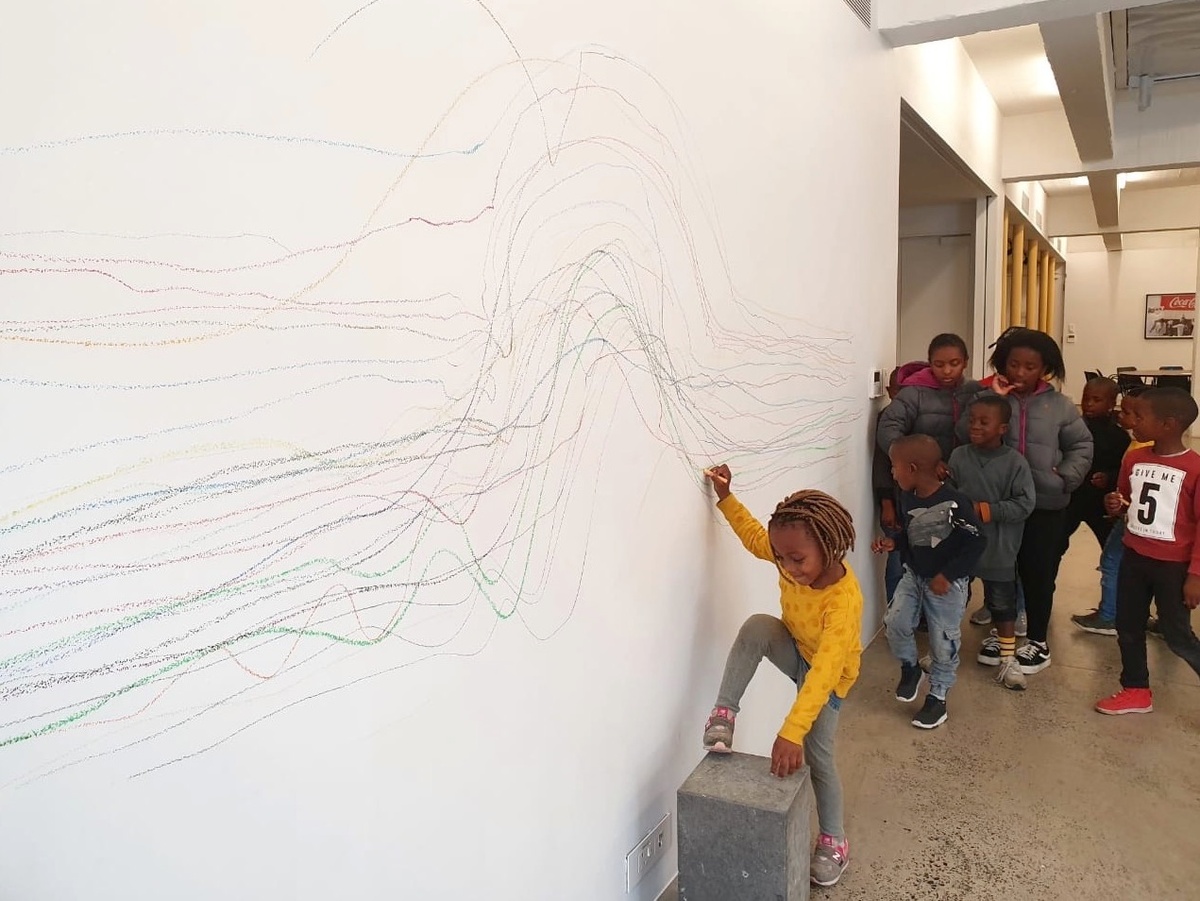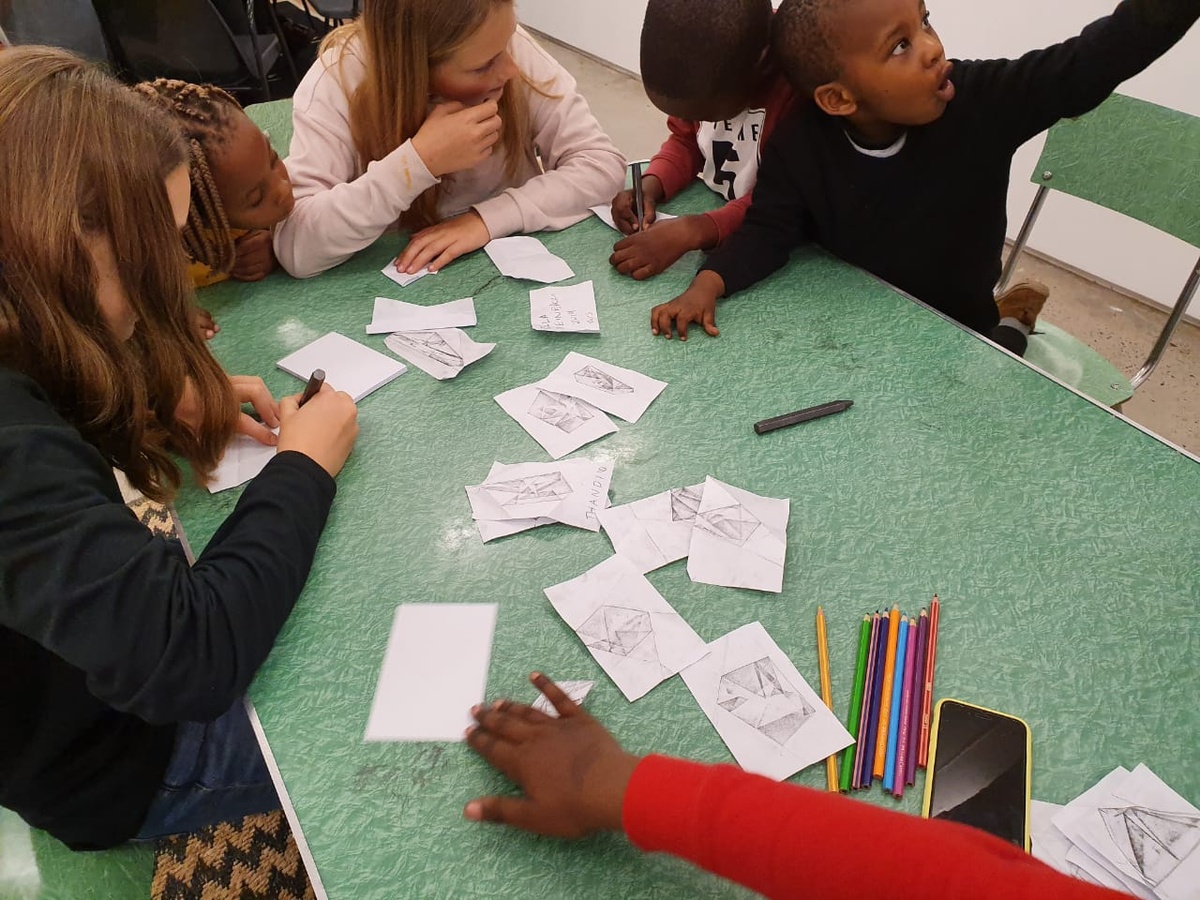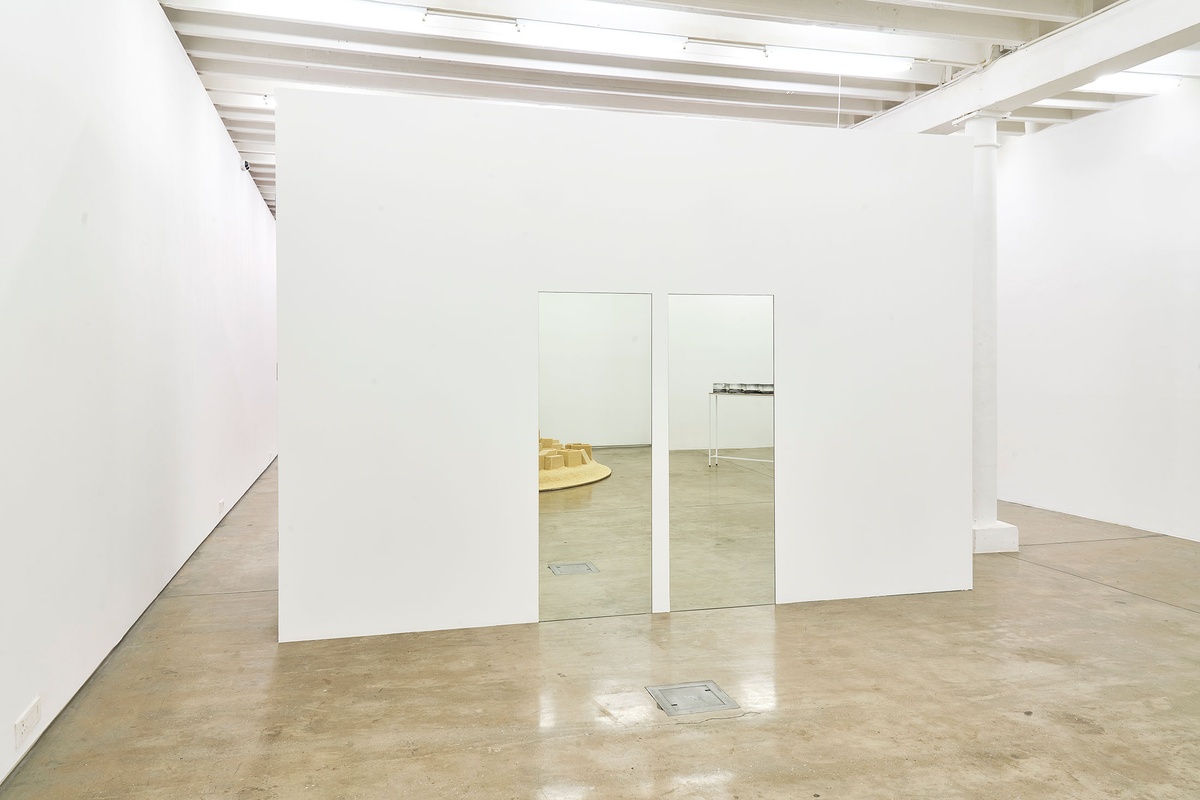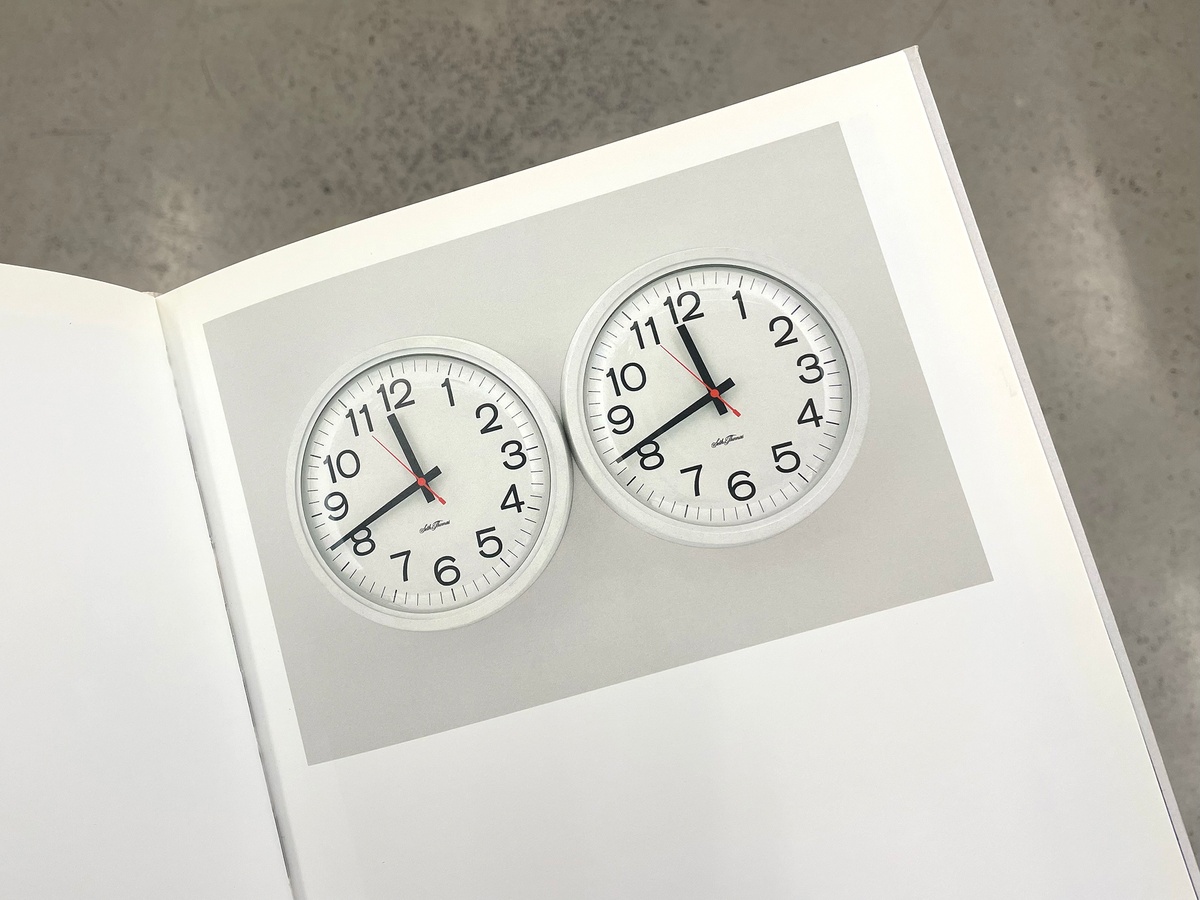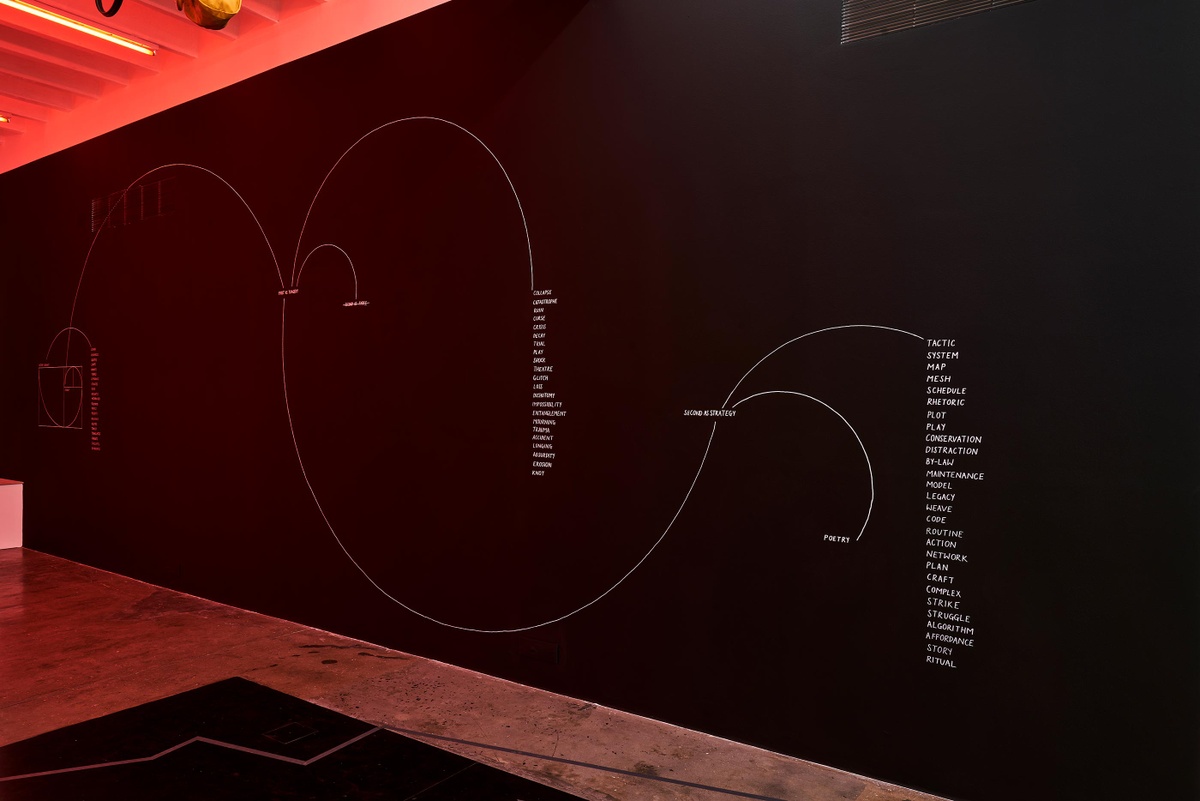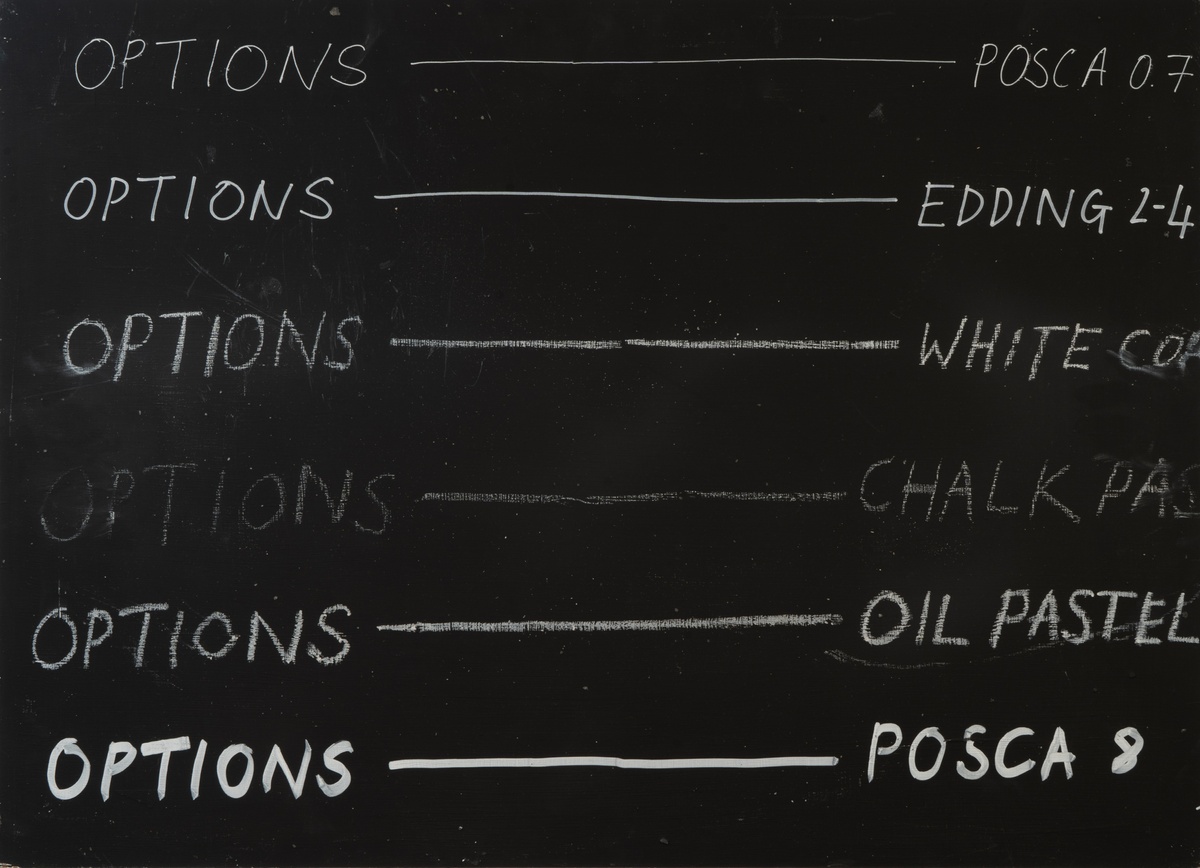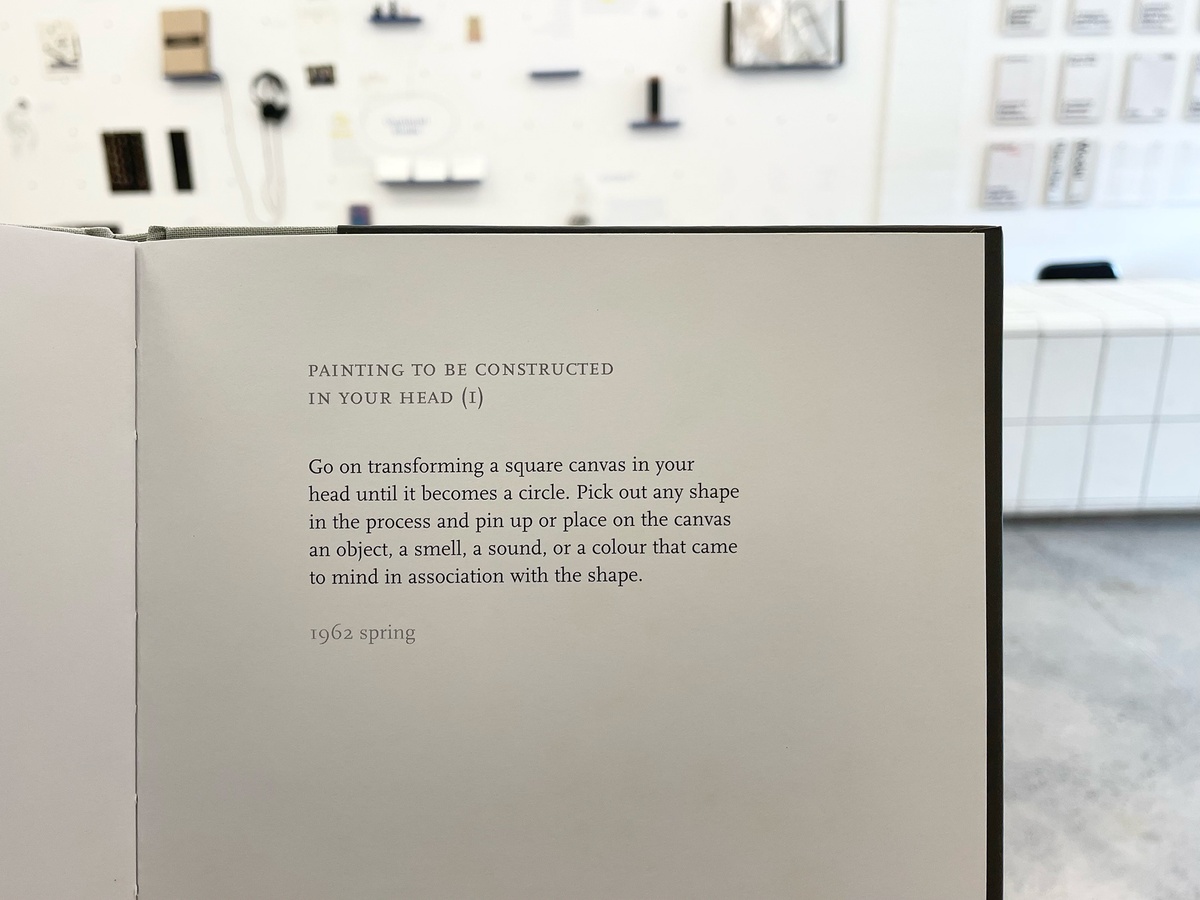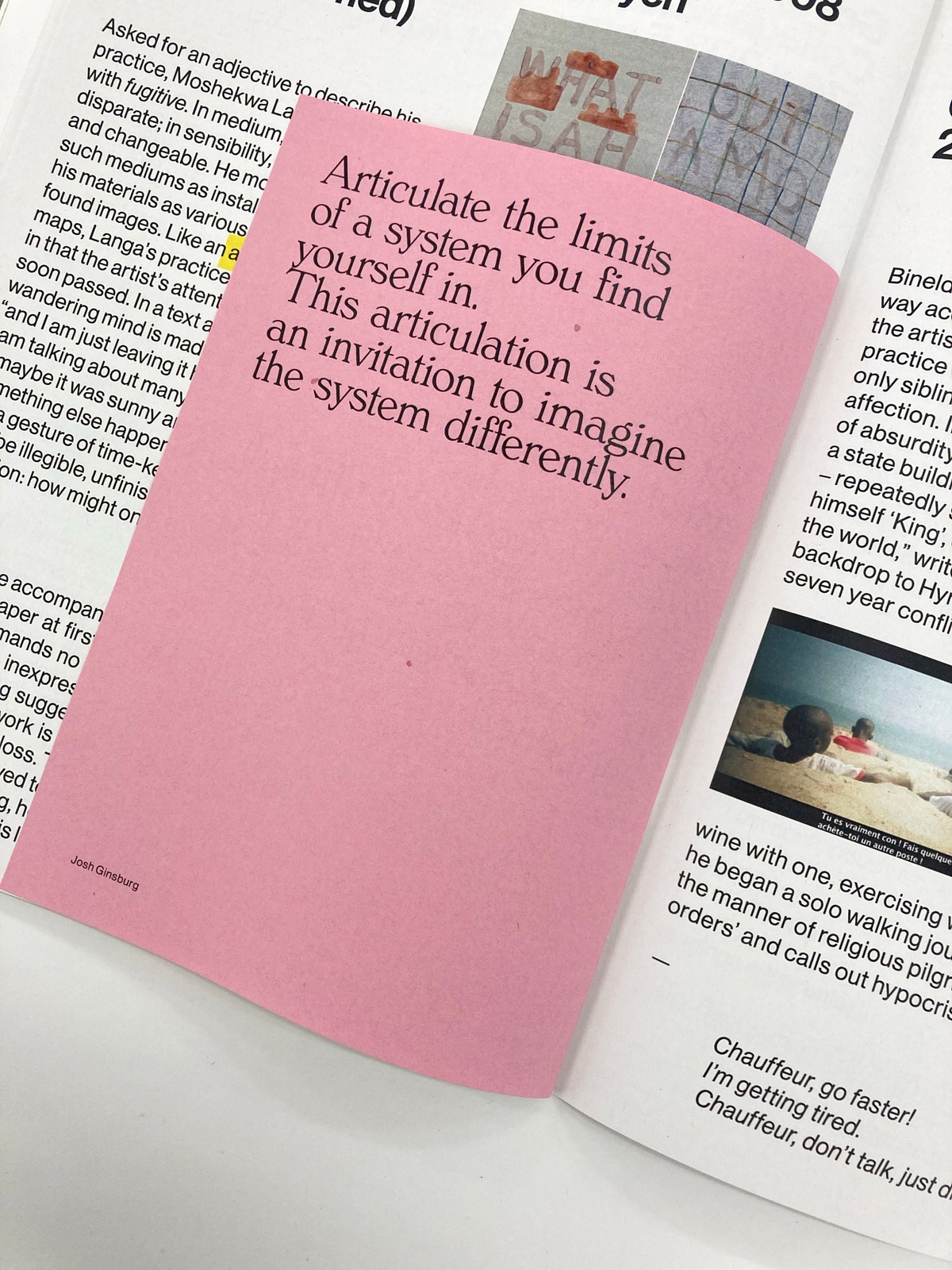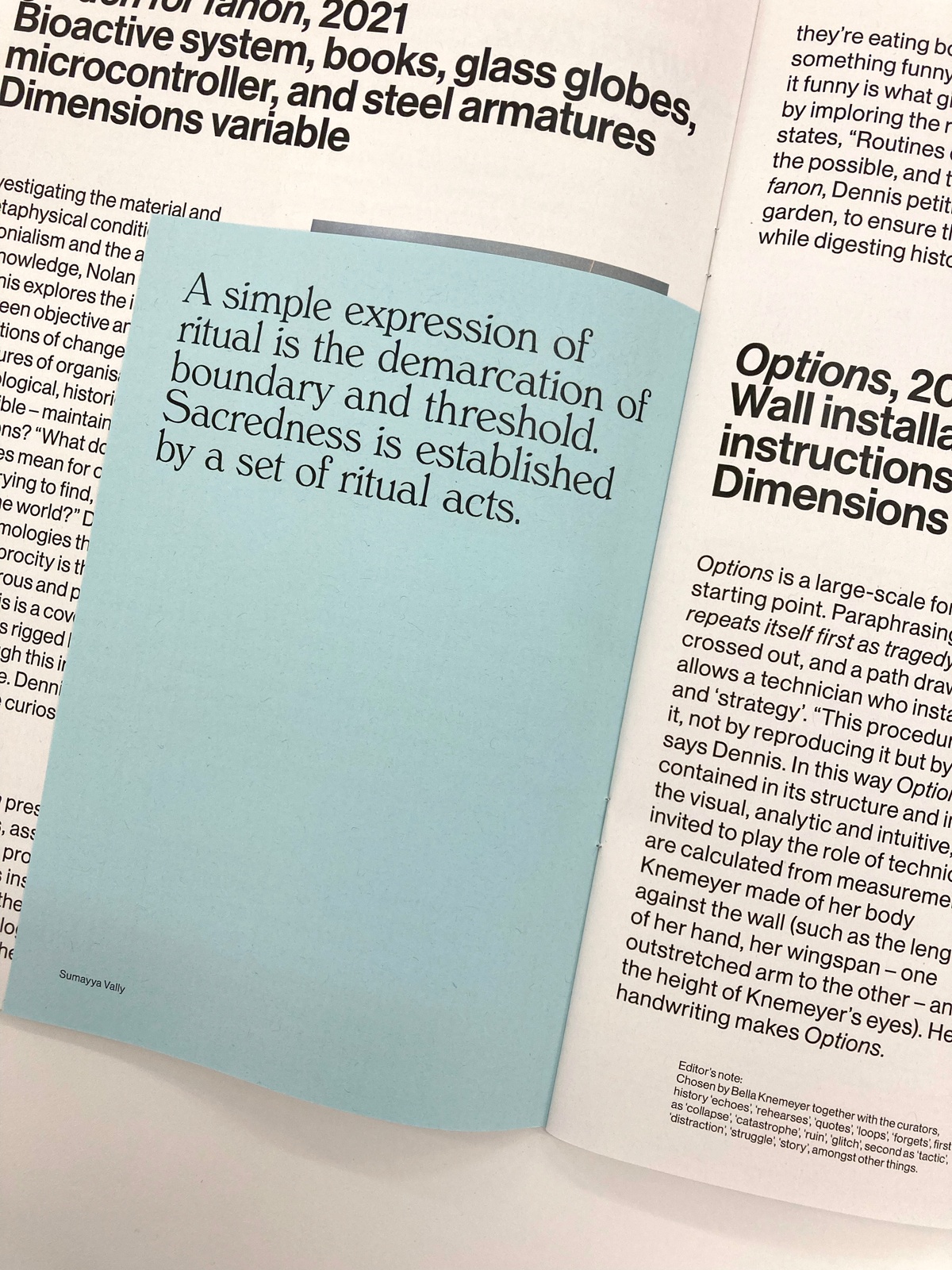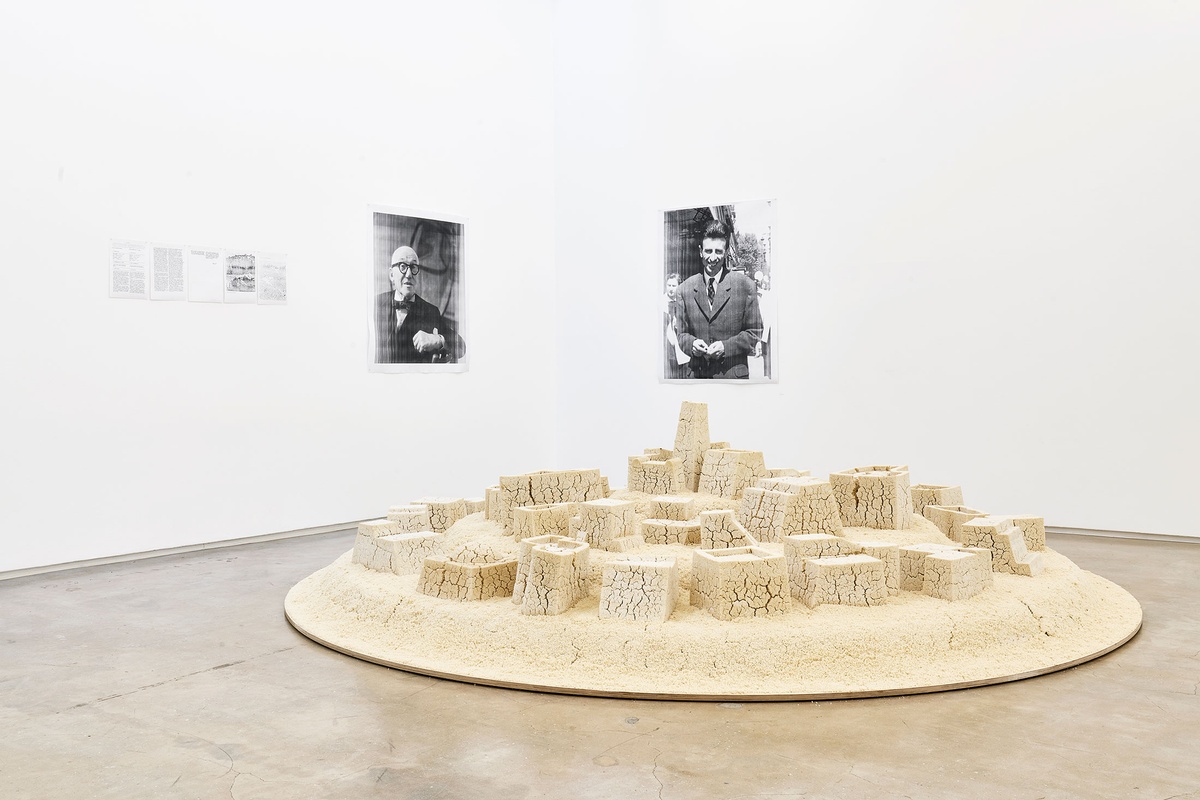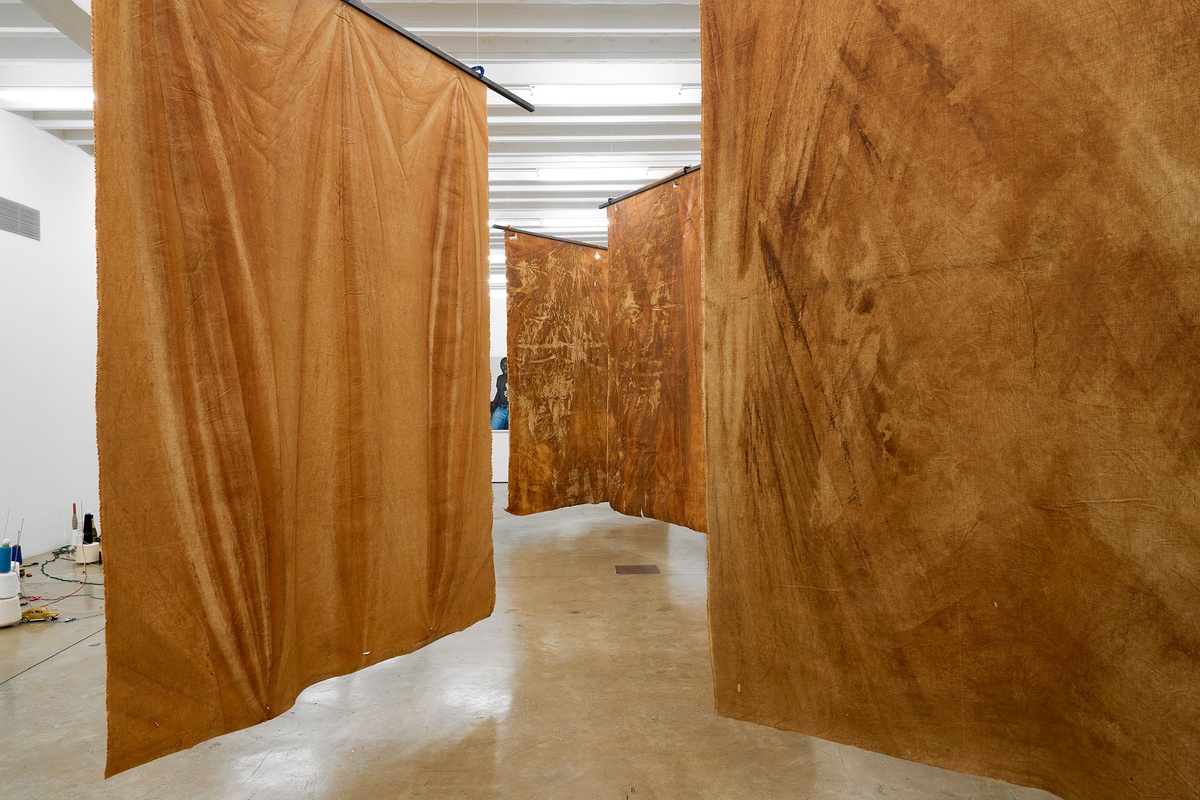Nolan Oswald Dennis
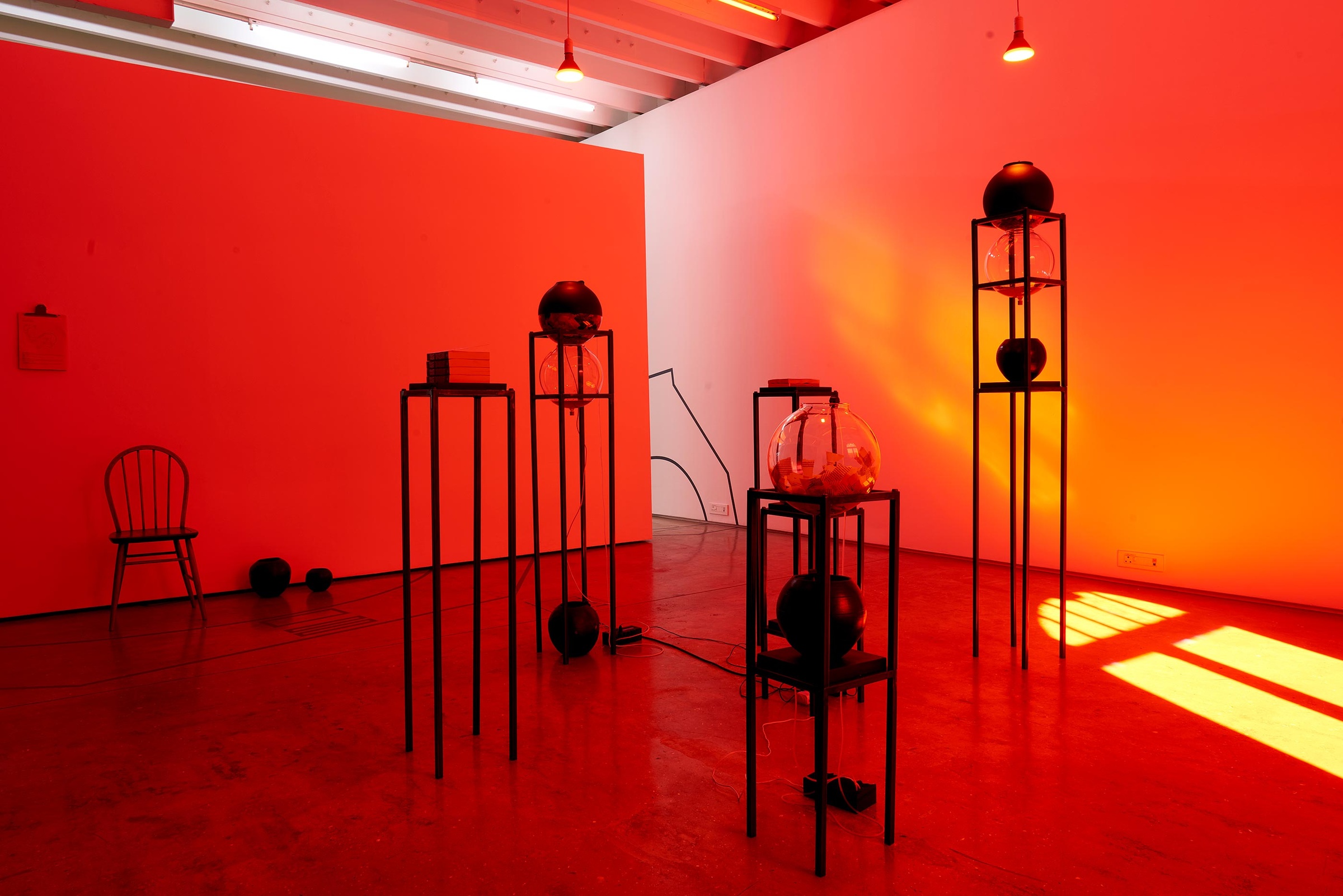
garden for fanon presents a complex bioactive system of metal stands, books, and glass globes, assembled to accelerate the activity of a community of earthworms. The protocols accompanying the installation have a two-fold effect: the carer is instructed to feed the worms and maintain a conducive environment, and the worms process copies of Pan-Africanist philosopher and psychologist Frantz Fanon’s The Wretched of the Earth, converting the fibre of the books into fertiliser. “The worms are making soil as they’re eating books – this is a game of meaning,” says Dennis. “There is something funny about having worms in a gallery, eating a book. What makes it funny is what gives it weight.” Fanon concludes The Wretched of the Earth by imploring the reader to flee from motionless movement. Dennis similarly states, “Routines or procedural structures contain action... They delineate the possible, and then produce reality through that delineation.” In garden for fanon, Dennis petitions his audience to enact a procedural care – to tend to the garden, to ensure the survival of the earthworms, to feed soil with knowledge – while digesting history’s complexities.
b.1988, Lusaka
Investigating the material and metaphysical conditions of colonialism, Nolan Oswald Dennis explores the interactions between objective and subjective conditions of change. What structures of organisation – whether technological, historical, the known or invisible – maintain or transform these conditions? “What do these structures mean for our work – the work of trying to find, or make, or change the world?” Dennis asks, his drawings and diagrams offering entry points into the cosmologies that he is preoccupied with; his models inviting strategic play. “Reciprocity is the key mechanic of play that I’m interested in,” says Dennis. “The humorous and playful aspect is the part of the work that operates on the surface – this is a cover underneath which a lot more can happen.” South Africa’s democracy is rigged by the structural and systematic remnants of colonialism, and it is through this invitation to play that the audience can begin to engage in potent critique. Dennis’ practice is equal parts experimental and complex – testing reality with the curiosity of the scholar; the precision of an astrophysicist.
